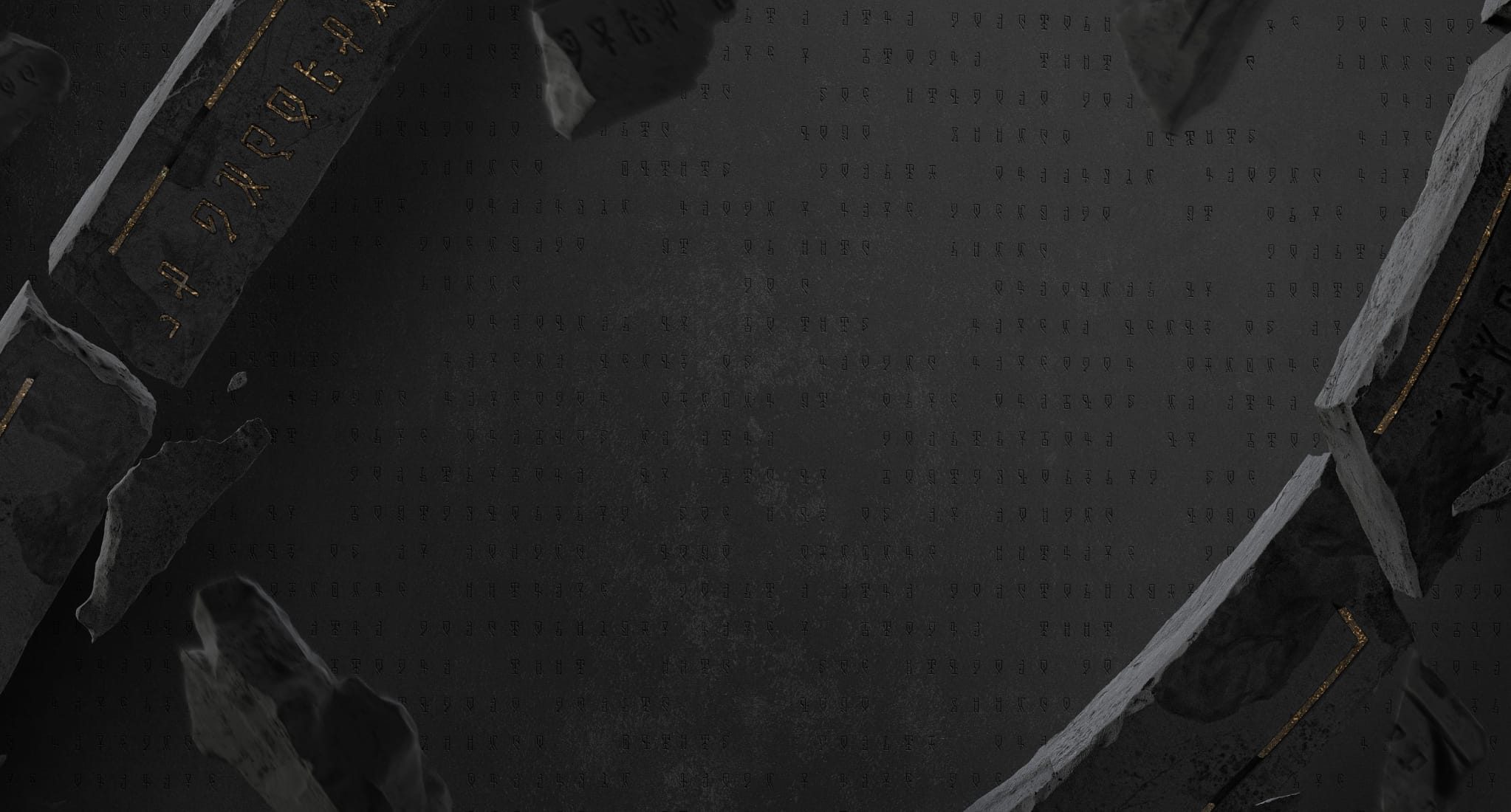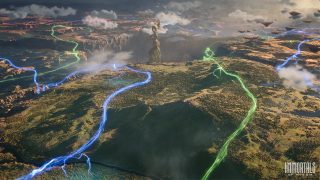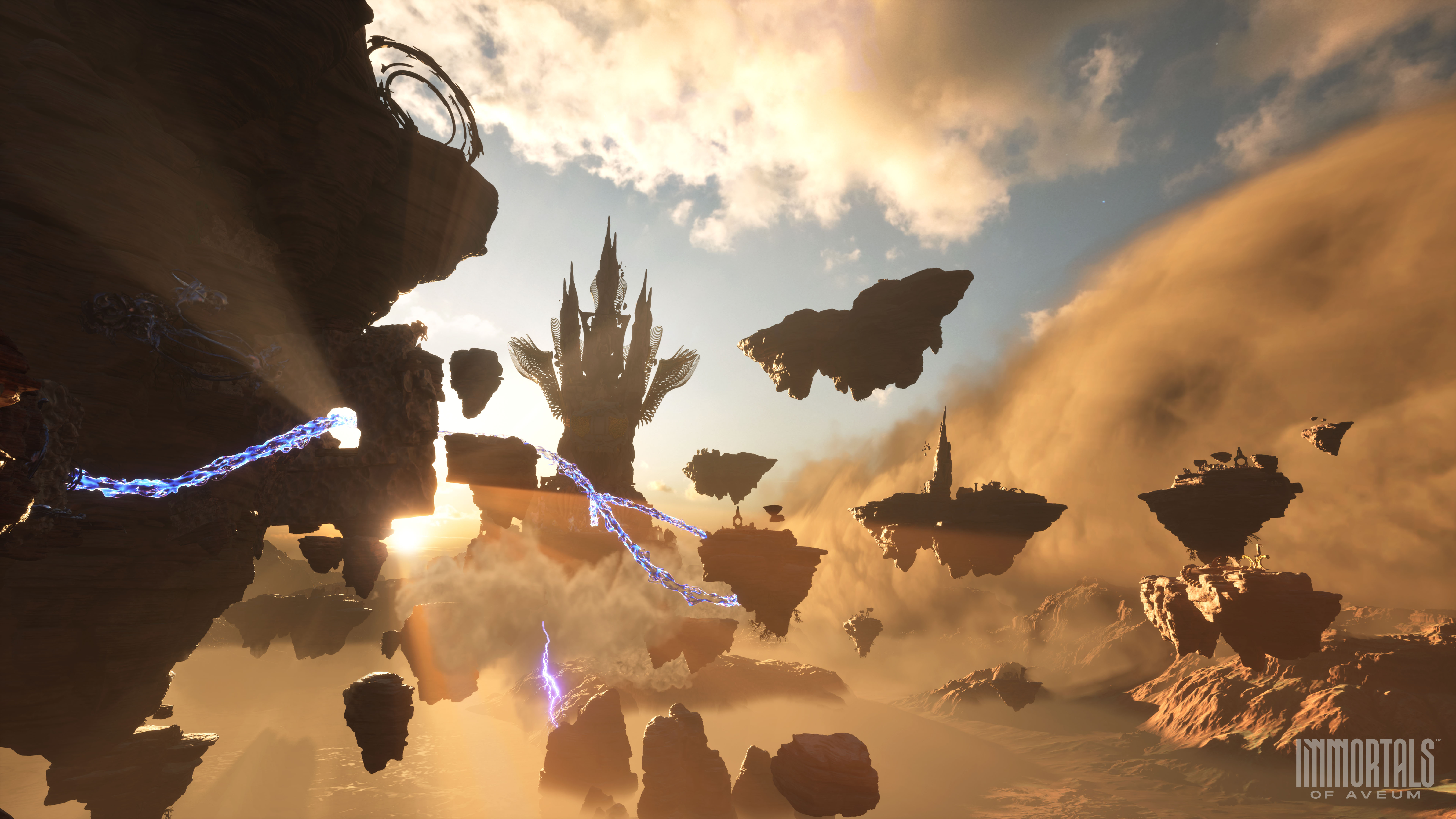
The Bleeding-Edge Tech Powering Immortals of Aveum™
Technical Deep-Dive

The developers at Ascendant Studios reveal what Unreal Engine 5.1 brings to the world of Aveum.
From the start of development, the team here at Ascendant Studios wanted Immortals of Aveum™ to be a truly next-generation (now current generation) experience on a technical level—something that pushes our development craft further than we’ve gone before as a team. We’re proud to be releasing one of the first AAA games on Unreal Engine 5.1, an engine that provides us with the tools and technology to make something we feel is truly special and hope players do too.
If you follow the more technical side of game development and what it can do for visual fidelity and gameplay, you’ve no doubt seen some of the incredible work the team at Epic Games has done with their UE5 tech demos. Immortals of Aveum, however, is one of the first examples to take this technology and bring it into a fully featured playable experience. Lighting, video effects, physics, and more have all been tuned to provide a breathtaking experience designed to bring the player on a cinematic journey through Aveum.
In every location you visit, whether it’s the ruins left in the wake of the Everwar or a bustling settlement filled with life, we’re working to provide a level of detail that gives the feel of real, lived-in locations—even though they’re set in a fantasy world. And we’re using some really powerful new tools that UE5 provides to make that happen.
Nanite is one example: This micropolygon geometry system intelligently adjusts the level of detail of any in-game object depending on how close you are to it. So, if you have an object that’s far enough away that you couldn’t make out fine details on it even if they were there, Nanite will actually make the object physically less complex—on the fly!—so that the game doesn’t waste resources rendering it fully.
“In any other game,” says our Chief Technology Officer Mark Maratea, “you might see what looks like a big craggy wall, but it’s actually flat with a craggy texture and maybe some shader trickery. We don’t have to do that; we actually build an object with all of that detail, and Nanite determines whether that detail shows up based on your distance.”
That means that those resources that are saved by not having lots of detail on things that are far away can be spent on things that are closer, making the nearby environment incredibly detailed. “In some games,” Mark says, “you look at the cinematics and you say, ‘That looks amazing!’ And then you see the gameplay and you say, ‘That does not look the same!’ That’s typical; we’ve lived with that for a long time in video games. But in our game, the quality is super-close. You’re watching an in-game cinematic and then the camera flies into Jack’s head and you assume first-person control—and everything looks the same. The visual fidelity is one-to-one, with only some changes to depth of field, motion blur, and other cinematic cutscene effects. Everything is in real time.”
UE5 also comes with a fantastic global illumination and reflections system called Lumen, which provides movable, changeable lighting in real time. “Light not only hits characters and the environment and casts shadows,” says Senior Art Director Dave Bogan, “but it bounces off of them as well, picking up the color and allowing that to be seen in nearby static and dynamic objects. Lumen does this efficiently enough that we can add in other supporting lights and volumetrics to make the environment really lush and atmospheric.”
“Take our Library level on the Sky Islands of Oremen,” Mark says. “When you come out, the sun is just above the horizon line on these floating islands. And as you’re walking around, it’s interplaying through everything. It’s like you’re in Rome at sunset, in the Colosseum, with the light coming through the remaining walls, and depending on where you’re standing you’re either in complete shadow or you’re in sunlight, and it’s playing off all the rocks and rubble around you—that entire area is like that.”
“When the lighting feels strange in a game,” Dave says, “or there’s a lack of shadows, or the light doesn’t bounce right in places you’d expect to see it—that breaks the player’s immersion, even if only for a moment. This technology helps us get past that.”
(8k image using Lumen’s global illumination system)
And then there’s World Partition, Unreal Engine 5’s method of loading segments of the environment as you move through it. That allows for some truly enormous play areas. “Our levels are huge,” Mark says. “We have a big variety of level sizes—some that are large and open-ended and others that are more focused. A couple of our levels are the equivalent of 25 or 30 kilometers in length! That’s just the playable space! To be clear, we’re not an open-world game though. We love to play those games, but it doesn't fit the vision we have or the story we want to tell.”
“So what World Partition does,” says Dave, “is lets us split up those huge levels into smaller sections that can be streamed in and out of memory as the player moves through them. This allows us to maximize the visual fidelity surrounding the player at all times—and also lets us build levels of a size that previously wasn’t possible without doing loads that interrupt gameplay.”
“And unlike open-world games you’re used to,” Mark says, “all our levels are meticulously designed with all this bespoke art, which is made possible by Lumen and Nanite. So covering that ground would actually be a lovely walk! And you’ll find all kinds of environmental storytelling that adds to the feeling that this is a lived-in world.”
And it’s a world you’ll be able to manipulate yourself. On your travels through Aveum you’ll encounter structures and statues that reach into the sky, and they’re not just for show; with the power of your sigil, you’ll be able to reform the world around you to create new paths to traverse and new ways to explore. Giant statues made of ancient stone will move with life under the guidance of your hand. Overgrowth that wrapped itself around mountains eons ago will untangle and reach out at your will.

You might assume that this size and scope and beauty requires some serious processing power. You would be correct. “You can see in other fantasy games where they backed off on some of the detail because it wasn’t practical,” Mark says. “We chose not to be practical. But in order to do all this we had to make the hard decision not to support older video cards and the previous generation of consoles. But there’s a hell of a lot more game to play.”
So what does this mean in practice? We wanted to build a game that can be approachable by current-gen hardware while also still giving PC enthusiasts an experience that harnesses the beauty of Unreal Engine 5.1. As a benchmark, here are our recommendations for running the game at the minimum settings we’re targeting at 1080p/60fps and at its recommended settings at 1440p/60fps. However, we’re going to continue optimizing the game all the way up to launch, so these may change. If they do, we’ll be sure to make that clear.
PC Specs |
MINIMUM |
RECOMMENDED |
|---|---|---|
Operating System |
Windows 10 (64 bit) or later |
|
CPU - Intel |
Core i7-9700 |
Core i7-12700 |
CPU - AMD |
Ryzen 7 3700X |
Ryzen 7 5700X |
RAM |
16GB (Dual-channel) |
|
GPU - Nvidia |
GeForce RTX 2080 Super (8GB) |
GeForce RTX 3080Ti (12GB) |
GPU - AMD |
Radeon RX 5700XT (8GB) |
Radeon RX 6800XT (16GB) |
DirectX |
Version 12.1 or later |
|
Storage |
110GB (SSD strongly recommended) |
|
Performance expectation |
1080p @ 60fps, Low-Medium settings |
1440p @ 60fps, Medium-High settings |
All versions of the game require a 64-bit processor and operating system (Windows 10 or later), DirectX 12.1 or later, and 110GB of storage space. We also strongly recommend playing on an SSD.
Our goal with implementing this tech into Immortals of Aveum is to reach an end-result that we hope players will enjoy for years to come. “On PC,” says Mark, “our texture pool and visual quality floats based on your video card. So if you’re running a 4090, it feels like you’re playing the cinematics. And if upgraded graphics cards or consoles come out with more memory, it’ll be much more straightforward to recompile the game to take advantage of the new power.”
And we couldn’t do that without Unreal Engine 5. “Some of the ideas the team would throw out there,” Mark says, “we just wouldn’t have been able to do it, because we didn’t have the technology. ‘Hey let’s have a 400-foot walking mech level, in the ocean, and we can have the mech come under attack from airships, and you’re fighting inside the mech, and you’re fighting on top of the mech, and maybe you almost fall off the mech at one point?’—and it would be like, ‘How would we ever make that a reality?’ But that level is in the game. And we hope players think it looks amazing.”

